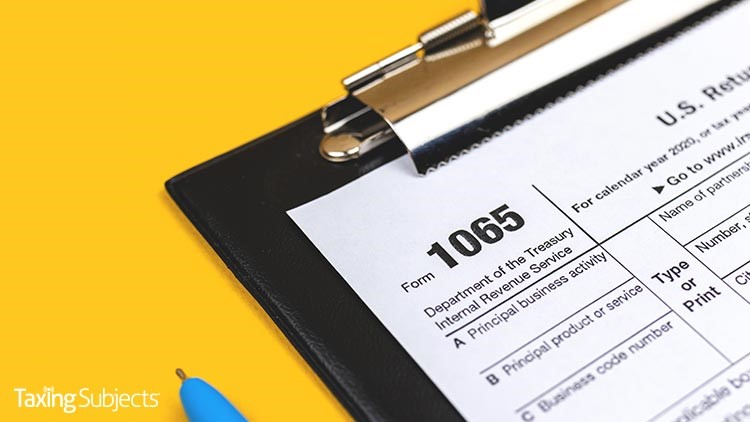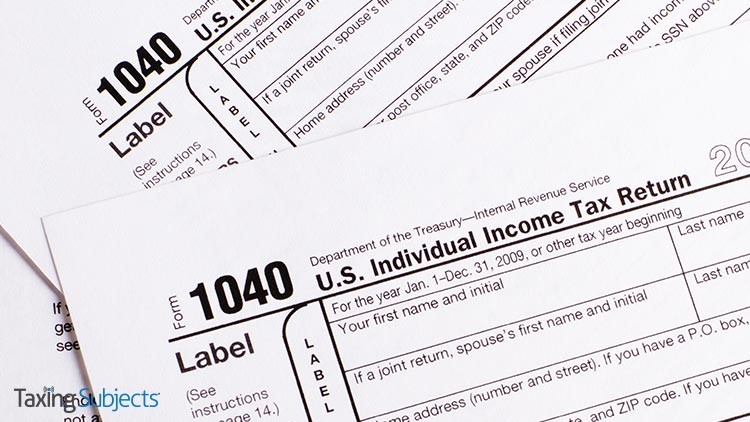by Socheata Ten EA, LLC | May 8, 2021 | Tax Tips and News
Public fascination with cryptocurrency tends to follow dramatic gains and losses in the market. While the latter results in pundits sounding the death knell for Bitcoin and its ilk, the most reliable predictor for the lifespan and legitimacy of crypto lies in the Internal Revenue Service—and some newly minted crypto-holding clients may have questions about the virtual currency checkbox on their tax year 2020 Form 1040.
Eagle eyed do-it-yourself filers will have noticed that checkbox moved from the 2019 Schedule 1 to directly above the standard deduction question on the 2020 Form 1040. Those who have been quietly holding onto cryptocurrency as a hedge against inflation—or hoping to become an overnight millionaire—may have felt a jolt of panic after realizing Uncle Sam is keeping tabs. Heck, you might have even received a few phone calls that earned you a new client.
For a better understanding of crypto tax liability, we’re going to walk through a few common questions.
What is cryptocurrency?
Cryptocurrency is virtual currency that is backed by an encryption algorithm designed to prevent coin-duplication counterfeiting. The current supply of any given coin is generated by “crypto mining:” Think the gold standard, but instead of a precious metal, crypto-miners use their computer—or warehouses full of them—to solve a complicated math problem in order to mine (create) a set number of coins that they can sell.
In addition to serving as a fiat currency alternative, some virtual currencies offer additional functionality, like “smart contracts” and Internet access. The value promised by projects like Ethereum and other Bitcoin alternatives has given rise to a wide “altcoin” market that is available to investors on a number of cryptocurrency exchanges.
Note: The terms “cryptocurrency,” “crypto,” and “virtual currency” will be used interchangeably throughout the rest of this blog.
How does the new virtual currency question on the Form 1040 affect cryptocurrency holders?
The inclusion of a yes-no virtual currency question that reads “At any time during 2020, did you receive, sell, send, exchange, or otherwise acquire any financial interest in any virtual currency?” seems self-explanatory. But to cover our bases, we spoke with Drake Software Federal Tax Product Manager Robin Miles, EA.
“We know that IRS is beginning to pay a lot of attention to the trading and use of virtual currencies, because they now require every taxpayer to affirm or deny their participation in the market,” Robin said. “At this time, it is just a ‘Yes’ or No’ question that must be answered on the main input screen.”
However, answering this question isn’t necessarily as straightforward as it may seem at first. According to Q5 in the 46-question virtual currency FAQ on IRS.gov, taxpayers do not have to answer “yes” if they only bought virtual currency with “real currency” (USD) last year. So, when do taxpayers need to answer “yes?” Seemingly, only when there is a cryptocurrency exchange with tax-related consequences.
When do taxpayers need to pay tax on their cryptocurrency?
The IRS treats cryptocurrency as property, so taxpayers generally need to report income in these situations:
- The receipt or transfer of virtual currency for free (without providing any consideration), including from an airdrop or following a hard fork
- An exchange of virtual currency for goods or services
- A sale of virtual currency
- An exchange of virtual currency for other property, including for another virtual currency (“Virtual Currency,” DrakeSoftware.com)
Now, let’s take a closer look at two items from that list: hard forks, and virtual currency sales.
Hard Fork: The software that any given cryptocurrency is based upon is not set in stone. Sometimes an update can be so significant that it results in the creation of a new, separate cryptocurrency that exists alongside the original. This is called a hard fork, and it can result in a taxpayer suddenly having this new crypto deposited in their account by what is often referred to as an “airdrop.” (Fun fact: Bitcoin Cash was created by a hard fork in Bitcoin.)
After being given the new cryptocurrency, recipients will owe income tax for the year they acquire it: “When you receive cryptocurrency from an airdrop following a hard fork, you will have ordinary income equal to the fair market value of the new cryptocurrency when it is received, which is when the transaction is recorded on the distributed ledger, provided you have dominion and control over the cryptocurrency so that you can transfer, sell, exchange, or otherwise dispose of the cryptocurrency” (Q23).
Important: If a taxpayer is not given any new cryptocurrency following a hard fork, they do not owe income tax (Q22).
Sale of Virtual Currency: Generally, investors buy and sell virtual currency on exchanges, like Binance.us and Coinbase. The purchase of cryptocurrency for the purpose of investment does not result in owing income tax, but selling virtual currency—whether for USD or another crypto—can be considered a taxable. The amount of tax owed is generally determined by how much it was worth at the time of purchase (the basis), its fair market value at the time of the sale, and how long it was held (short-term versus long-term capital gain).
If a taxpayer sells crypto for more than they paid to acquire it on the exchange, that’s a capital gain. Just like stocks, crypto that is held for less than a year is subject to short-term capital gain tax; crypto sold after a year is subject to long-term capital gain tax. The trick—especially for newer investors—can be record keeping.
US-based cryptocurrency exchanges report to the IRS, so users should receive relevant forms from their exchange to help determine tax owed, like Forms 1099-B, 1099-K, and 1099-INT. That said, it would be wise for investors to separately keep track of all information related to the purchase and sale of crypto, just in case they don’t receive one of these forms.
To learn more about specific cryptocurrency tax issues, be sure to check out the IRS FAQ in the link below.
Source: “Frequently Asked Questions on Virtual Currency Transactions,” IRS.gov
– Story provided by TaxingSubjects.com
by Socheata Ten EA, LLC | May 6, 2021 | Tax Tips and News
Are you having trouble dealing with all your passwords?
Let’s face it, passwords are becoming a problem.
Following best practices for data security means creating unique passwords for all computers, networks, and online accounts. Unfortunately, the number of accounts you’re supposed to protect is growing exponentially:
- PC login
- Network login
- ISP account
- Personal email address
- Work email address
- Professional tax software login
- Online banking and credit card accounts
- Online retailers (Amazon, BestBuy, Target, Walmart)
- Mobile trading applications (Binance.us, Charles Schwab, Coinbase, E-Trade, TD Ameritrade, Webull)
- Social media (Facebook, Linkedin, Instagram, Snapchat, TikTok, Twitter)
- Online television account (cable/satellite)
- Mobile carrier account
- Streaming services (HBO Max, Hulu, Netflix, Paramount+, Peacock, Prime Video, Twitch, Youtube)
- Video game accounts (Battle.net, Epic Games, GOG.com, Nintendo Online, Origin, Playstation, Steam, Xbox)
Even if you don’t check every box in the list, there are probably a half-dozen unique passwords you still have to memorize—and some need to be changed every six months!
The sad reality is that we have to stay one step ahead of identity thieves. After all, if you use the same password for your email address and mobile banking app, identity thieves will have a much easier time stealing your money. Luckily, a password manager can help you deal with password bloat.
What is a password manager?
Password manager software is designed to securely store all of your passwords in one convenient location.
“Most people create weak passwords and reuse them for multiple accounts which drastically increases the chances of having multiple accounts hacked,” Drake Software Chief Compliance Officer Suzanne Vanderpool explains. “Using a password manager that automatically creates complex and secure passwords for each account greatly reduces this risk. But it is very important that you remember the one and only password you will need to access your password manager.”
While the primary benefit of a password manager is cutting the number of passwords you have to remember down to one, there are other benefits as well:
- Create secure passwords automatically
- Schedule automated password changes
- Autofill passwords during login
- Provide a user-friendly dashboard
Another thing to consider is the type of password manager you want to use, whether software that’s installed on your device, an online password manager, or a hardware-based solution. If you’ve never even heard of a password manager, it can be difficult to know where to start.
How do I choose a password manager?
Picking the right password manager means finding the set of features that best suits your situation. Do you want to install an app on each device, or would you prefer to login to an online service? Ultimately, it comes down to personal preference and ensuring that the platform features adequate encryption to protect all of your accounts.
“Whichever password manager you choose, be sure it has multi-factor authentication,” Suzanne recommends. “Remember, it houses all of your important passwords, so you want to keep it as safe as possible.”
– Story provided by TaxingSubjects.com
by Socheata Ten EA, LLC | May 5, 2021 | Tax Tips and News
It was a wise man indeed who first warned us to “hope for the best, but prepare for the worst.”
The Internal Revenue Service is following in those footsteps by reminding taxpayers that spring begins a very active period for weather in the U.S. In light of that, May includes both National Hurricane Preparedness Week and National Wildfire Awareness Week.
It shouldn’t be a surprise that reviewing emergency preparedness plans makes a lot of sense right now.
For those who like to think “it can’t happen here,” the Federal Emergency Management Agency (FEMA) knows it can. In the past year, FEMA declared major disaster areas stemming from hurricanes, tropical storms, tornadoes, severe storms, flooding, wildfires, and an earthquake.
That’s why there’s no time like the present for individuals, organizations, and businesses to come up with an emergency plan or update the one they already have.
In case of natural disaster …
The key to getting through any natural disaster is the ability to think ahead—before there’s trouble. How would an individual taxpayer or business be able to recover after a disaster? What documents would they need if their files were missing, damaged, or destroyed by the weather event?
Recovery can depend on the individual or business taxpayer’s ability to produce documentation proving insurance claims, qualifying for disaster grants and other relief.
The IRS has some tips that can help taxpayers to recover quicker economically if they are hit by a natural disaster.
Secure key documents
The story of our lives is written in the vital documents we keep. That’s why taxpayers need to keep original documents such as tax returns, birth certificates, deeds, titles and insurance policies inside waterproof containers that are in turn kept in a secure space.
Duplicates of these documents should be kept in a separate location other than the taxpayer’s home or business. Another option is to scan them and copy the data onto electronic storage media such as a flash drive.
Reconstructing records after a major disaster might be required for tax purposes, to get federal assistance or to receive insurance reimbursement. Those who have suffered partial or total loss of their records should go online to the IRS’ Reconstructing Records webpage as a first step in the process.
Document your valuables and equipment
Once the weather event is over, home- or business-owners will need some way to back up their claims for insurance or tax breaks. The best way is to record all property beforehand, but especially any expensive or high-value items. Whether it’s a simple list, a spreadsheet, or a video record, the compilation should be kept with the important documents and a copy kept off-site as well.
Publication 584 has IRS disaster-loss workbooks that can help taxpayers and businesses assemble their lists of personal property or business equipment.
Fiduciary bonds for employers
Business owners have more to think about than just protecting their documents in the event of a natural disaster. If they use a payroll service, employers should follow the IRS’ advice and ask their payroll provider if it has a fiduciary bond in place.
The bond could offer the employer a layer of protection if the payroll service defaults.
The IRS urges all employers to choose their payroll service providers carefully.
How can the IRS help?
When FEMA declares a location to be a federal disaster area, the IRS can postpone specific tax filing and payment deadlines for those taxpayers who either live or have a business in the disaster area.
Such relief is automatic; there’s no need to call the IRS and request it. The agency can identify qualified taxpayers by their address of record and applies the stated relief when processing the return.
Anyone impacted by a disaster who has tax-related questions can call the IRS at 866-562-5227 to connect to an IRS specialist trained to handle disaster-related issues.
If a taxpayer suffered an impact from a disaster but didn’t live within the federally declared disaster area, they can call the same number, 866-562-5227, to see if they qualify for disaster tax relief or other options.
Complete disaster assistance and emergency relief details are available for both individuals and businesses on the IRS’ Around the Nation webpage on IRS.gov.
FEMA’s Prepare for Disasters webpage includes information to Build a Kit of emergency supplies.
Here are some other disaster preparedness sites that may prove useful:
Source: As hurricane season nears, IRS reminds people to prepare for natural disasters
– Story provided by TaxingSubjects.com
by Socheata Ten EA, LLC | May 4, 2021 | Tax Tips and News
Sometimes, taxpayers find themselves with a tax bill they just can’t satisfy. The taxpayer is willing to pay, but the bottom line is more than they can afford. Circumstances like this are made for compromise; or more precisely, an offer in compromise.
Meeting in the middle …
“An offer in compromise is an agreement between a taxpayer and the IRS that settles a tax debt for less than the full amount owed,” the IRS explains. “An offer in compromise is an option when a taxpayer can’t pay their full tax liability. It is also an option when paying the entire tax bill would cause the taxpayer a financial hardship.”
As you might expect, all offer-in-compromise requests are closely scrutinized. So, the IRS created the free Offer in Compromise Booklet to provide easily accessible information about eligibility, associated fees, and how arrangements affect other tax-related items, like refunds.
How do taxpayers get the offer in compromise process started?
Generally, taxpayers, whether individuals or business owners, must first make an appropriate offer based on what the IRS considers their true ability to pay. Acceptance is not automatic; unrealistic offers can be rejected by the IRS.
Before an offer can be considered, the taxpayer must:
- File all tax returns they are legally required to file,
- Have received a bill for at least one tax debt included on their offer,
- Make all required estimated tax payments for the current year, and
- Make all required federal tax deposits for the current quarter if they are a business owner with employees.
Also remember that the IRS generally won’t accept an offer in compromise from anyone who actually has the ability to pay the tax debt in full, either through an installment agreement or equity in assets.
When it reviews applications, the IRS considers the taxpayer’s unique situation and any special circumstances that may affect their ability to pay in addition to their income, expenses and asset equity.
Currently, the application fee for an offer in compromise is $205, but the IRS says it can be waived if an applicant “[meets] the definition of a low-income taxpayer.”
The IRS’ Offer in Compromise Pre-Qualifier Tool can help a taxpayer determine if they are eligible to make an offer to settle their tax debt. The taxpayer is taken through a series of questions that clarify their individual tax situation.
Sources: An offer in compromise may help some taxpayers settle their tax bill; Offer in Compromise Pre-Qualifier tool; Form 656 Booklet: Offer in Compromise
– Story provided by TaxingSubjects.com
by Socheata Ten EA, LLC | May 1, 2021 | Tax Tips and News
Partnerships and S corporations that will have to report “international tax matters” in 2022 can now review the new draft releases for Schedules K-2 and K-3. The IRS today announced the early release drafts, noting that instructions would follow sometime in the summer.
“The redesigned forms and instructions will also give useful guidance to partnerships, S corporations, and U.S persons who are required to file Form 8865 with respect to controlled foreign partnerships on how to provide international tax information,” the IRS wrote about the new schedules. “The updated forms will apply to any persons required to file Form 1065, 1120-S, or 8865, but only if the entity for which the form is being filed has items of international tax relevance (generally foreign activities or foreign partners).”
It’s worth noting that the changes specifically target “items of international tax relevance.” The rest of the K-2 and K-3 will be the same for passthroughs that do not have those interests.
Where can I find the early draft releases of the new Schedule K-2 and Schedule K-3?
The new schedules K-2 and K-3 can be found on the IRS’s “Draft Tax Forms” webpage. After navigating to the page, you’ll find the K-2 and K-3 sorted by the associated form:
Once available in the summer, the instructions will also be posted to the draft forms page. (If you’ve navigated away from this blog and have a hard time finding the IRS page, search for “IRS draft tax forms” on Google.)
What happens to affected passthrough entities that do not use the new Schedules K-2 and K-3 in 2022?
Invariably, some passthrough businesses will fail to use the new Schedules K-2 and K-3. And, as you might have guessed, the IRS wants to limit that number: “To promote compliance with adoption of Schedules K-2 and K-3 by affected pass-through entities and their partners and shareholders, the Treasury Department and the IRS intend to provide certain penalty relief for the 2021 tax year in future guidance.”
Source: IR-2021-98
– Story provided by TaxingSubjects.com
by Socheata Ten EA, LLC | Apr 30, 2021 | Tax Tips and News
This tax season, like so many before, a lot of filers could use a little extra time to get the job done. And while it’s true that anyone can request an extension of time to file beyond this year’s May 17 deadline, some taxpayers don’t even have to ask in order to have more time to file.
According to the IRS, over 16 million filers will get an extension “by filing a form or making an electronic payment.” But at least three groups won’t have to do anything to receive additional time to file.
Here’s a breakdown.
Winter Storm Disaster Victims
Old Man Winter did his worst to residents of Texas, Louisiana and Oklahoma recently. Because of near- and sub-zero temperatures, snowfall and other record conditions, portions of the three states were declared federal disaster areas.
Residents of any county within a federally declared disaster area in any one of the three states is entitled automatically to an extension of time to file, putting their tax returns due on June 15. This date applies to filing returns and paying any tax due.
For disaster victims in an area qualified for FEMA’s Individual Assistance program, there’s no need to contact the IRS to qualify. All the applicable extensions and other disaster-related relief are applied, based on the taxpayer’s address of record on file with the IRS.
This relief includes more time for making contributions to IRAs and other retirement plans for the 2020 tax year, and making estimated tax payments for 2021.
Relief is also available to those living outside the disaster area in certain circumstances.
For example, these taxpayers might live outside the disaster area but have a business within the disaster area, have tax records within the disaster area or are assisting in disaster relief efforts.
Check out the Around the Nation page on IRS.gov for details on all available relief.
Taxpayers in a Combat Zone
The Internal Revenue Service gives soldiers and eligible support personnel who are serving in a combat zone at least 180 days after they leave the combat zone to file tax returns and pay any tax due. Publication 3, Armed Forces’ Tax Guide, has a complete list of designated combat zone locations.
Military and support taxpayers in combat zones also have more time for other tax-related functions, such as making contributions to an IRA. Since various circumstances can affect what extensions are available to an individual, refer to Publication 3 for guidance.
Taxpayers Living Outside the U.S.
U.S. citizens and resident aliens living and working outside the U.S. and Puerto Rico also get a break on the filing deadline. They have until June 15 to file their 2020 returns and pay any tax due.
The June 15 deadline also applies to U.S. military forces on duty outside the U.S. and Puerto Rico, but who are not serving in a combat zone. The IRS recommends taxpayers include a statement with their tax return explaining which situation applies to them.
Taxpayers abroad should note that while they get an extension of time to file and pay, there’s a penalty for late payments. Interest will be charged at 3 percent per year, compounded daily, to payments received after the May 17 deadline.
Publication 54, Tax Guide for U.S. Citizens and Resident Aliens Abroad, has more information on special rules for U.S. taxpayers living outside the country.
Other Taxpayers
The usual method for obtaining an automatic extension still applies for taxpayers who aren’t in these three special groups is to simply submit a request for an automatic extension to extend a taxpayer’s filing deadline until Oct. 15. (Payment of any tax due, of course, is still due by May 17.)
Other than filing Form 4868 to request an extension, taxpayers can pay their tax due electronically to get an extension to file. Online payment sites like Direct Pay or the Electronic Federal Tax Payment System (EFTPS) can be used, as well as debit or credit cards.
Check out all the payment options at IRS.gov/payments.
Source: IR-2021-96
– Story provided by TaxingSubjects.com







 Socheata Ten EA, LLC
Socheata Ten EA, LLC